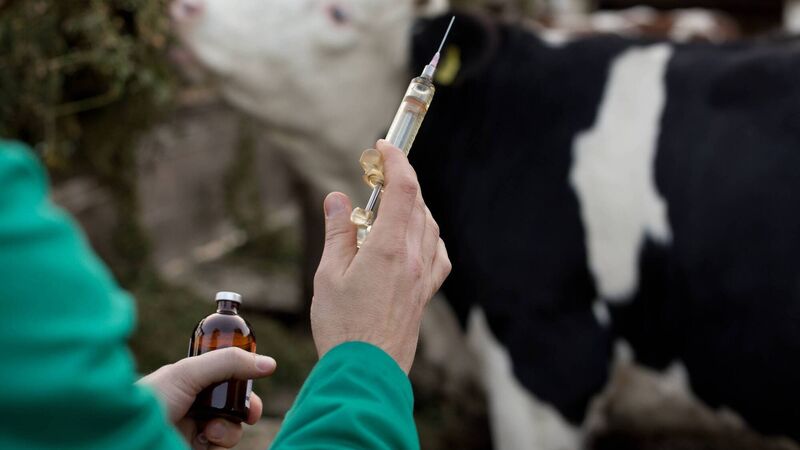Vigilance urged as blackleg and lead poisoning cases rise

Blackleg is common, and the best control is prevention by vaccination.
Cases of blackleg are now being seen by the regional veterinary laboratories, and the Department of Agriculture's animal health surveillance unit has alerted farmers to be on guard against blackleg, and against lead poisoning, also commonly a disease of late spring and early summer.
Blackleg is an acute, usually fatal disease of cattle and sheep, caused by the production of toxins by anaerobic soil-dwelling bacteria called clostridia.
Clostridium chauvoei bacteria can survive for decades, perhaps centuries, as highly stable spores. Outbreaks have been associated with flooding and other forms of soil disturbance such as tillage, drainage, etc, which can trigger outbreaks by bringing spores to the surface. Some farmers will be aware that some areas of their farm are "blackleg hotspots".
The disease is common, and the best control is prevention by vaccination. Successful vaccination requires the selection of a suitable vaccine — broad spectrum multivalent clostridial vaccines provide a wider range of protection against blackleg and prevent other diseases like tetanus also — and correct storage and administration, as per the data sheet enclosed with the product.
When Clostridium chauvoei bacteria enter the body, they may proliferate in anaerobic (air-free) conditions, producing toxins which kill muscle tissue (necrosis), producing gas in the process.
This results in darkened areas of muscle, with pockets of gas throughout the lesion, and is usually rapidly fatal. Some blackleg cases present as lameness or areas of swelling, but most are found dead. Very rapid decomposition and significant gas accumulation under the skin are often features of clostridial deaths (but not diagnostic).
Small cavities within the dark and dry area of affected muscle are pockets of gas produced by the bacteria, which gives rise to the crackling texture that is evident when you touch the overlying skin of an affected area, often feeling as though there were froth or "suds" under the skin.
Farmers should carefully check their fields and hedgerows for sources of lead, such as old car batteries, before turning cattle out to pasture and before silage making.
Hedgerows bounding public roads should be checked carefully for fly-tipping of risk materials. Where identified, sources of lead should be removed and disposed of safely.
Prevention is a matter of not allowing cattle access to sources of lead.
Common sources of lead are lead batteries (including electric fencing batteries), discarded lead flashing and lead piping, lead shot, bonfire ash, and old lead paint tins and flaking lead paint.
Dispose of all lead batteries carefully, according to local authority guidelines. Prior to disposal, ensure batteries are kept where cattle cannot access them, or where they or their leaked contents cannot end up in silage or in a diet feeder.
Ensure cattle do not have access to old cars or tractors or leakage from their batteries or sump oil. Old car seat coverings (linoleum) often contain a lot of lead.
Do not use timber painted with old toxic lead paints, like an old painted door to block a gap or doorway, or leave them in areas that are accessible to cattle, especially calves, which have a tendency to lick such items.
Do not use lead pipes for plumbing, or red lead paint for preserving metalwork or timber.
Painted pallets may be a source of lead, especially if recycled as partitions.
Old bonfire sites may contain a lot of lead in the ash residues.
Lead is highly toxic to animals, mainly affecting cattle and sheep, with calves being particularly at risk due to their increased susceptibility and curious nature.
Catastrophic losses have occurred on occasion, where discarded batteries have been accidentally incorporated into silage and this silage then fed to cattle.
From a public health perspective, lead exposure in milking cattle or beef cattle being readied for slaughter has potential risks for the food chain. To protect the human food chain, cases of lead poisoning are investigated thoroughly, and certain restrictions may be applied.
Losses due to lead poisoning can be substantial for the farmer.
Toxicity can occur within 24 hours of exposure and signs range from sudden death to blindness, ataxia, head pressing, and convulsions.












